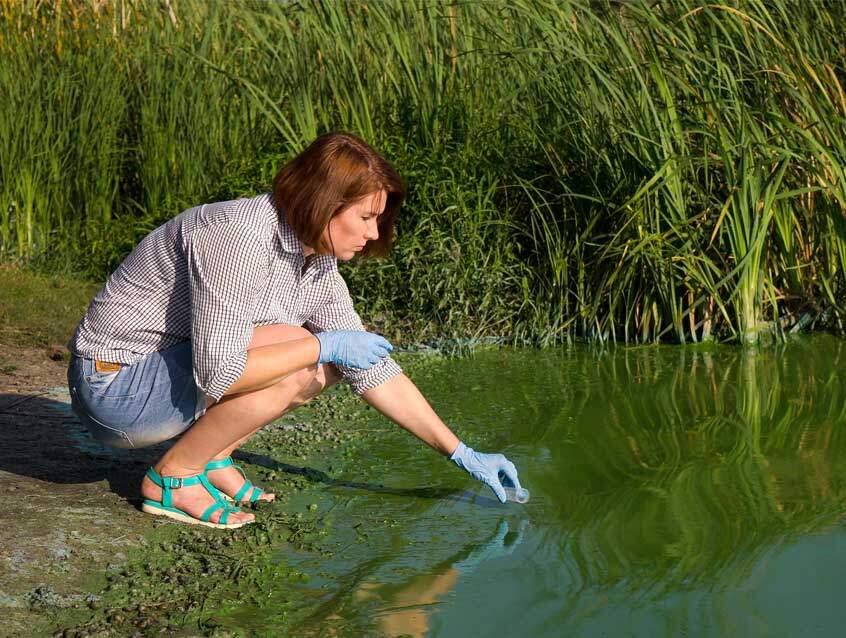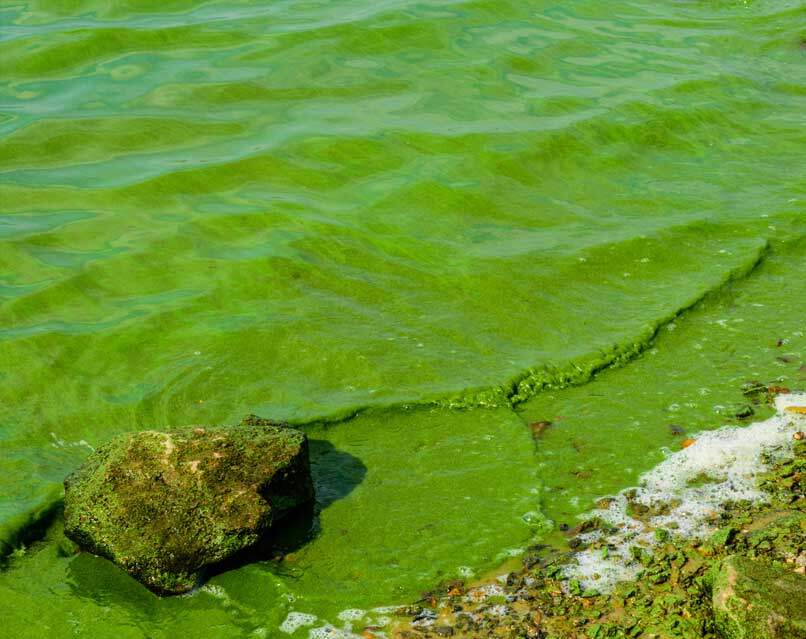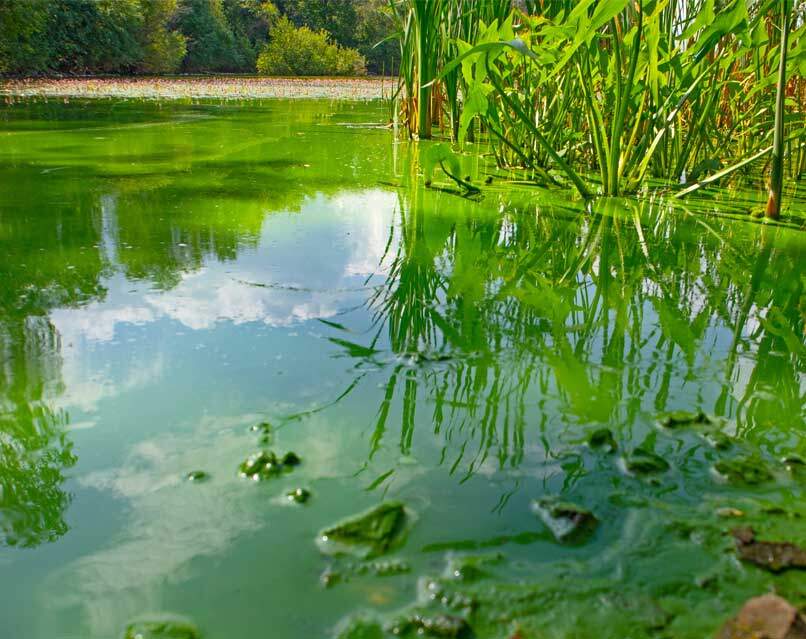 As the weather gets warmer you may see blue-green algae forming in your pond. This blue-green algae may be caused by toxic cyanobacteria. This noxious form of aquatic growth can be extremely harmful to aquatic life, including fish, as well as children, pets, and farm animals who come into contact with it – in many cases causing extreme toxic poisoning and even death.
As the weather gets warmer you may see blue-green algae forming in your pond. This blue-green algae may be caused by toxic cyanobacteria. This noxious form of aquatic growth can be extremely harmful to aquatic life, including fish, as well as children, pets, and farm animals who come into contact with it – in many cases causing extreme toxic poisoning and even death.
The first sign of this blue-green algae will be recognized as the water takes on a pea-soup appearance. As it grows, the density of the growth will thicken and it can also turn other shades of color from yellow to white, and eventually aquamarine blue. Often a pond with toxic blue-green algae will have dense mats of it accumulate on the downwind side of the pond.
Toxic Blue-Green Algae Blooms are Dangerous!
Cyanobacteria blue-green algae blooms are no joking matter in ponds or freshwater lakes. They become toxic to fish and even wildlife if they ingest sufficient quantities of it. These toxins are released from the blue-green algae cells when they die and rupture. Fish are also at risk because this algae causes oxygen levels to drop below the threshold for fish survival. Blue-green algae blooms are not just toxic, they also give off a pungent odor that some say resembles the smell of sewage or natural gas.
While these algae blooms are more prominent from mid-summer to fall, they can happen at any time with the right conditions. The blooms are fueled by phosphorus and nitrogen. They often appear overnight and there is no real way to predict when or if such an appearance will happen. The best way to prevent these blooms is to reduce the nutrients in your pond water. Proper pond maintenance is important.
Treating Cyanobacteria Toxic Blue-Green Algae
If you are looking to treat blue-green algae with algaecides you should be aware that doing so is very risky and should only be done by a qualified biologist. The blooms are highly susceptible to algaecides and over-treating could lead to a larger scale of toxin release or oxygen depletion.
There are safer methods of treating toxic blue-green algae that can and should be used which include supplemental aeration, beneficial microbe enhancement, and application of nutrient deprivation products. This type of pond treatment works by targeting the cause of the problem and not just the symptom. When used properly, this type of pond water treatment plan can reduce the density and the duration of blue-green algae blooms.
Cyanobacteria Harmful Algae Blooms: Effective Testing & Treatment
The key to effective management of toxic Cyanobacteria blue-green algae blooms is to test for and identify the presence of cyanobacteria in your pond and effectively reducing the nutrients upon which the rely in your pond water. Likewise, regular pond water filtration and aeration is an important part of managing and reducing these nutrients. Biological filtration combined with beneficial bacteria help remove harmful pollutants and nutrients and help create a clean, safe, and thriving pond ecosystem.
Learn more about treating and managing toxic Cyanobacteria Harmful Blue-Green Algae Blooms in your pond.






